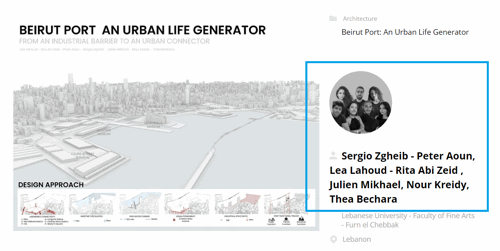ORTHODOX CHURCH

Project idea
This project is inspired by the fundamental Orthodox principle that sacred architecture should not serve aesthetics alone but must be deeply connected to spiritual needs. Church buildings are not merely artistic expressions but places of worship that embody theological and communal significance. The design of the Orthodox church in Bazovik is based on the concept of unity—both architectural and spiritual—where the church and bell tower form an indivisible whole. This unity reflects the interconnectedness of faith, space, and tradition, creating a sacred environment that serves its liturgical function while maintaining a strong relationship with the local community. The project seeks to balance historical continuity with contemporary architectural interpretation, ensuring that the sacred space remains relevant while respecting Orthodox architectural traditions.
Project description
The design follows a proportional and geometric formation principle, essential for the structural and spatial organization of church buildings. The church is positioned on an elevated platform to emphasize its central role within the community. The surrounding landscape remains in its natural state, preserving the connection between the sacred space and its environment while allowing for accessibility and traditional religious practices.
The naos serves as the central worship area, with a secondary entrance and a direct connection to the bell tower, reinforcing their symbolic and functional unity. Special attention has been given to natural lighting, with openings placed above the candle-lighting area for ventilation and a dome featuring multiple openings to allow daylight to illuminate the interior. This interplay of light enhances the spiritual atmosphere, reinforcing the sacred experience.
The architectural design embraces rounded forms, defining the entrances and the transition between the church and the bell tower. Unlike conventional designs where the bell tower stands as a separate or dominant element, this project integrates it seamlessly with the church, symbolizing the call to prayer and the unity of the faith community. The facade is treated with a plaster finish, ensuring economic efficiency and a minimalist aesthetic, while gold details serve as a symbolic representation of divine light and spiritual transcendence.
Technical information
The church follows a proportional and geometric design framework, ensuring spatial harmony and structural stability while maintaining a clear connection to Orthodox liturgical traditions. Constructed entirely of concrete, the building’s walls are of increased thickness, eliminating the need for additional thermal insulation. This allows the structure to naturally retain heat, making it well-suited for the climate and the functional needs of the community, as the church is designed for shorter gatherings and a capacity that aligns with the size of the village. For the construction of the dome, pendentives, or spherical triangles, were used to smoothly transition from the square base to the circular dome. This structural solution not only provides stability and support but also enhances the visual harmony of the space, linking the horizontal and vertical elements of the building. The use of pendentives is a traditional architectural technique that helps distribute the weight of the dome evenly while allowing for natural light to filter into the naos, creating a spiritually uplifting atmosphere.
The facade is finished with plaster, providing a simple and cost-effective exterior that emphasizes the purity of form, while carefully placed gold details serve as a symbol of divine light and spiritual elevation. The lighting concept plays a crucial role in shaping the sacred atmosphere, with the dome featuring multiple openings that enhance natural illumination, allowing daylight to filter into the naos in a dynamic manner. Additional ventilation openings are strategically placed above the candle-lighting area, ensuring fresh air circulation while subtly reinforcing the connection between light and spirituality.
The use of rounded forms in entrances and transitional spaces enhances the continuity of the architectural language, guiding movement and interaction within the sacred space. This approach creates a harmonious balance between tradition and contemporary design principles, ensuring that the project not only preserves Orthodox architectural heritage but also adapts to the evolving needs of modern worship and community engagement. Through its materiality, spatial organization, and symbolic integration, the church in Bazovik embodies a timeless expression of faith, fostering a sense of belonging and spiritual connection for future generations.






